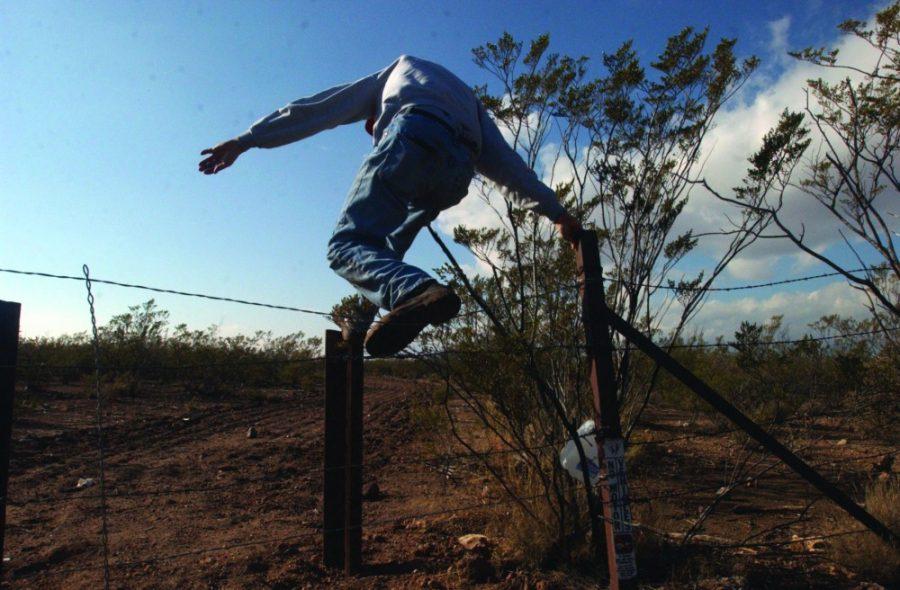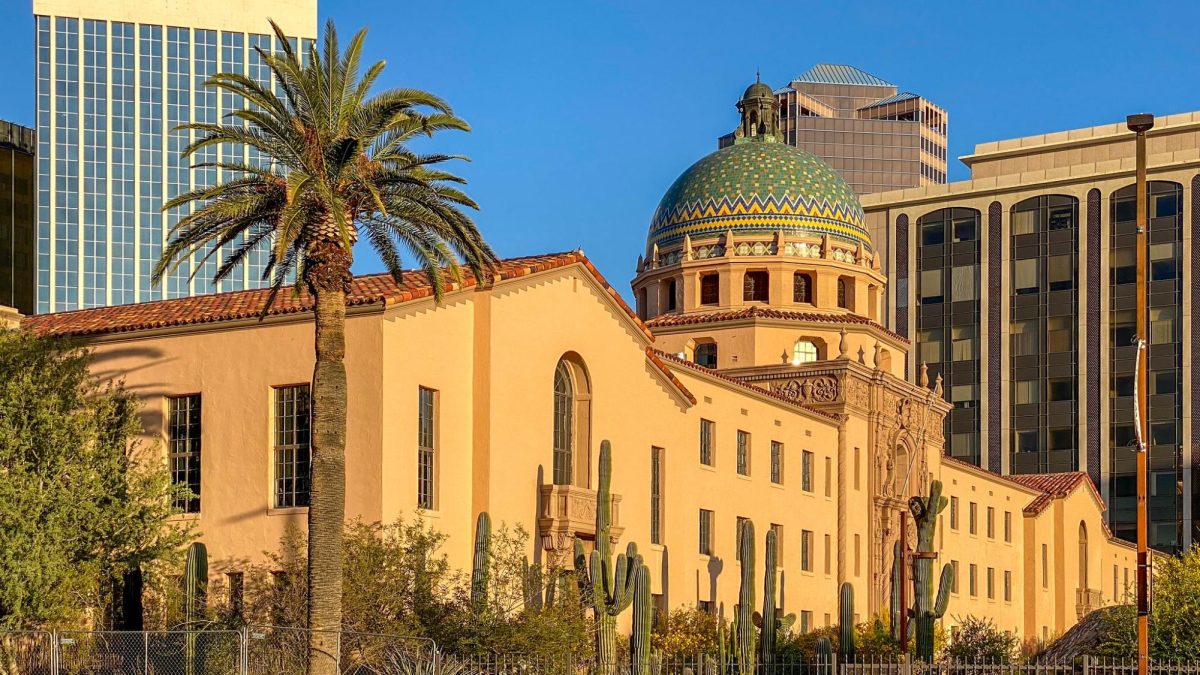The Department of Homeland Security released two memos Feb. 21 detailing new policies for immigration enforcement in an attempt to implement Trump’s two remaining executive orders on immigration.
Trump signed two immigration executive orders named Enhancing Public Safety in the Interior of the United States and Border Security and Immigration Enforcement Improvements on Jan. 25.
The two memos, signed by Sec. John Kelly, clarify how Trump’s orders will actually be enforced by the country’s agencies.
On the campaign trial, Trump took a hard line on illegal immigration promising to speed up deportations and build a wall along the southern border.
“For those here today illegally who are seeking legal status, they will have one route and only one route: to return home and apply for re-entry,” Trump said during a policy speech on the campaign trail in Phoenix.
Kelly’s enforcement memos reflect Trump’s campaign promises and the spirit of his executive orders.

Trump Administration’s Approach
The DHS memos state U.S. Customs and Border Protection “shall immediately begin planning, design, construction and maintenance of a wall.”
The memos outline a plan to hire 10,000 immigration and customs enforcement officers and 5,000 U.S. CBP agents.
According to Lynn Marcus, co-director of UA’s Immigration Law Clinic, the administration will need to acquire significant appropriations from Congress in order to execute these policies.
The memos direct ICE and the CBP to expand partnerships with local law enforcement officials to delegate them the authority to identify and arrest illegal immigrants under a program called 278(g).
DHS directs the broader detention of immigrants crossing the border and awaiting a hearing. The memo states immigrants can be sent to Mexico, even if they are not Mexican, while awaiting a hearing.
Expedited removals allow officers to issue non-appealable deportation notices to any individual who has not resided in the United States for the past two years—DHS is looking to expand the current, limited application of this policy.

The Numbers
“Any viable solution to a broken immigration system has to involve a way to constructively deal with the estimated 11.1 million undocumented people integrated into our communities and to accommodate the needs for temporary labor,” Marcus said.
According to the Pew Research Center, the number of unauthorized immigrants living in the US has steadily declined since reaching a peak of 12.2 million immigrants in 2007.
Pew estimates an average of 350,000 new unauthorized immigrants crossed the border every year since 2009. Only 100,000 of these are from Mexico, a decrease from past trends.
In 2014, Pew reported 5 percent of the U.S. civilian workforce was composed of unauthorized immigrants.
The number of unauthorized immigrants who have resided in the US for more than 10 years increased from 41 to 66 percent in 2005, according to Pew. Only 14 percent of unauthorized immigrants have lived in the US for less than 5 years, down from 31 percent in 2005. In 2010, 38 percent of unauthorized immigrants lived with their U.S.-born children.

Obama Administration’s Approach
Over his tenure, Obama saw the deportation of roughly 8 million unauthorized immigrants. Deportations peaked at 435,000 in 2013 according to data from the Department of Homeland Security.
In 2014, Obama announced immigration authorities would focus their efforts on deporting criminals not individuals with established roots in the country.
Felons, gang members and individuals who recently crossed the border became the priority.
The Trump administration has reissued and drastically expanded these priorities to encompass almost all illegal immigrants living in the US.
According to Nina Rabin a law professor at UA, the Obama administration oversaw a decrease in the number of municipalities participating in the 278(g), a program Trump wants to expand, due to concerns of profiling and lawsuits.
For example, Maricopa County withdrew from the program citing similar concerns.
Under the Obama administration, expedited removals were only issued to individuals within 100 miles of the U.S. border and two weeks of entry.

Policy of Fear
“The vast majority of the undocumented immigrant population are not criminals but President Trump’s efforts speak as though all undocumented immigrants are criminals,” Rabin said during a town hall event.
A Cato Institute study in 2014 concluded, “Both the Census-data driven studies and macro-level studies find that immigrants are less crime-prone than natives with some small potential exceptions.”
The study found rates of violence crime decrease as the concentration of immigrants increases.
“The order calls for the creation of an office for victims of crimes committed by removable aliens,” Rabin said. “I think this really speaks to the framing President Trump continually returns to of undocumented immigrants as criminals.”
The memo broadens deportation priorities to include all immigrants who have committed a chargeable offense, no matter if they have been charged or convicted. This will also include any individual deemed a national security threat or an individual who has abused a public program.
According to Rabin, this expands the administration’s priority to all undocumented immigrants in the country.

Impact on UA and Arizona
Deferred Action for Childhood Arrivals, created by an Obama-era executive order, provides temporary deportation relief and work permits to individuals who crossed the border illegally as children.
Trump’s executive order did not explicitly mention his policy on the hundreds of thousand of DREAMers but the memos state it will remain in effect. A future memo will address the fates of parents with children of U.S. citizenship.
“The executive order directs the use of all available resources to the building of new detention centers at the border with Mexico,” Marcus said.
The memos direct the expansion of detention centers, which currently cost the U.S. $2.3 billion a year, to detain 441,000 immigrants who have been waiting years to receive initial immigrant hearing due to backlogs.
The construction of these for-profit facilities along the southern border could be built hours away from the UA.
The next step for the Trump administration, after having laid out their goals in executive orders and specific policy enforcement plans in these memos, is to obtain the funding from Congress necessary to implement their vision.
Follow Randall Eck on Twitter.









